Hello, everyone. In today’s article, I’d like to introduce a game I’ve played recently that’s rather unlike any other. Its title is Heaven’s Vault, by the developer Inkle. Released earlier this year, it’s a game of exploration, discovery and language. It will take us on a journey into the past, but a past that we’ll have to piece together.
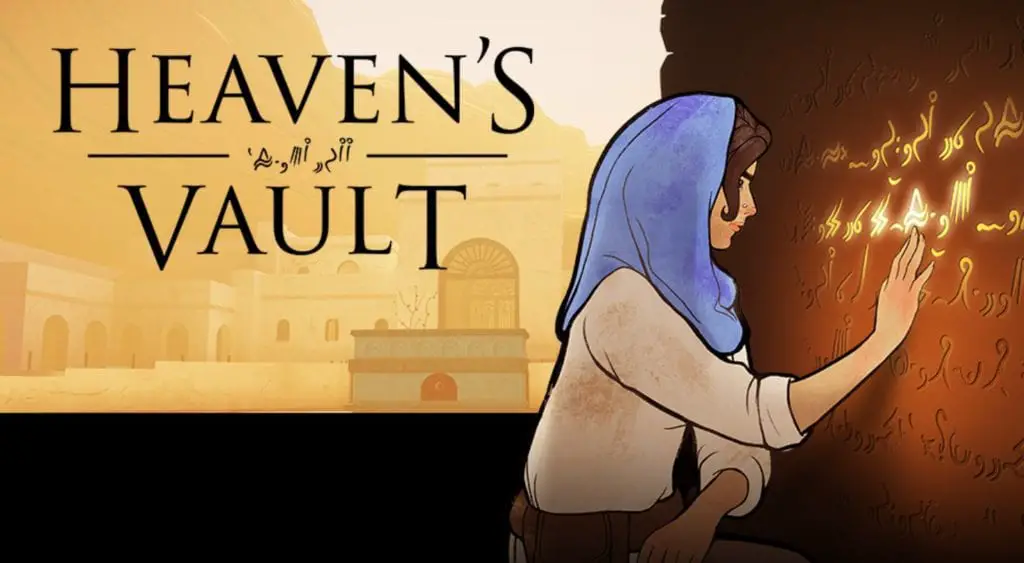
The character we control in this game is a woman by the name of Aliya Elasra. She’s an archaeologist and historian, but she wasn’t always one. We’ll discover pieces of her past, just as she discovers pieces history, over the course of the game. It wasn’t always sunshine and roses, let’s just say.
We begin the game in media res, with Aliya and a robot ascending a slope in some sandy, windy terrain. They reach a bricked-up doorway, where Aliya sees an ancient inscription… and the game skips back a few weeks to show us the start of the journey that’d lead there.
Our story’s proper beginning takes place in the University of Iox. Our heroine arrives there by request of Professor Myari. She wants Aliya to find a roboticist, Janniqi Renba, who had gone missing. All she has is the location of the moon where he was headed… and a brooch. An ancient one, covered in script. Which introduces us to the game’s central mechanic.
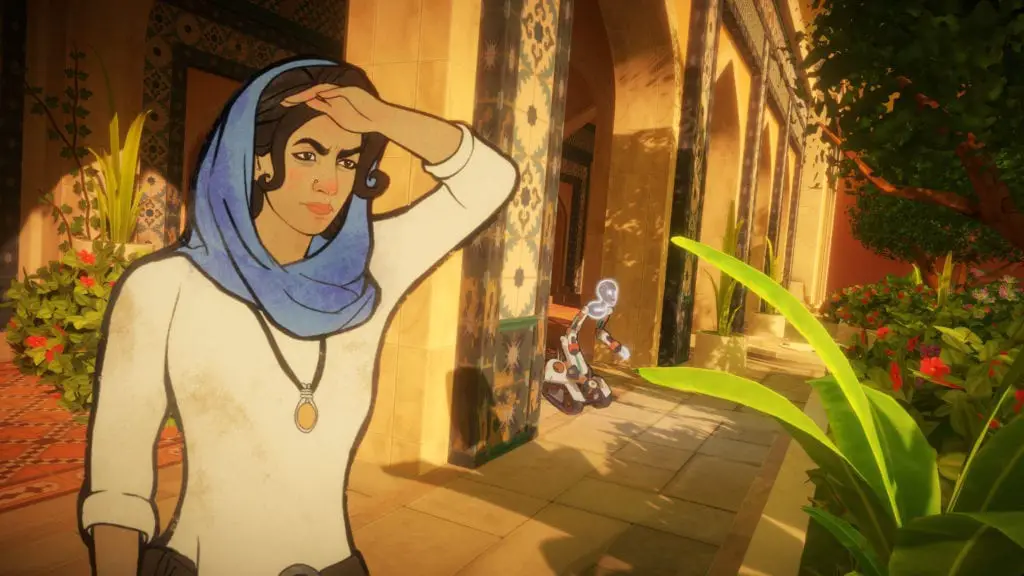
The language in question is referred to as “Ancient” by the characters. It belongs to a civilization of ages past. No one speaks it anymore, so we need to piece it together. We see a length of text and words we can enter into it.. The Ancient script doesn’t have spaces, so we need to decide how many of the words there are.
At first, we will be guessing, based on similarities between the symbols and context clues. As we make correct guesses, Aliya will write some words into her dictionary. If we guess wrong a few times, she’ll remove the word as a possibility.
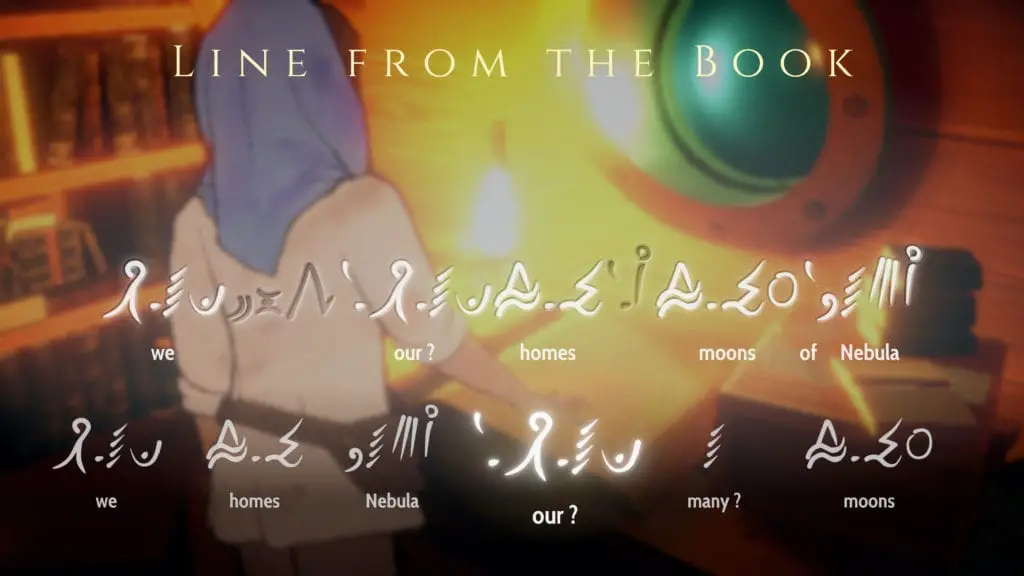
Once we make our guess about the inscription on the brooch, Aliya somewhat reluctantly sets off, with the robot in tow. She dubs them “Six”, as they’re the sixth robot the University had given her. She’d lost the other five. She’s vague on the specifics, but at least some of those “accidents” happened on purpose.
Here is where I need to mention that Aliya isn’t all that nice a person. Much of her behavior comes down to our choices as players — but by default, she’s headstrong, stubborn, a loner and lacking in social graces. Our choices of her dialogue and actions can determine if she’s simply rough around the edges or just plain rude. Her relationship with Six is a difficult one either way. Her recklessness clashes with their cautious nature and programming.
Regardless, Aliya and Six go sailing through the Nebula. Which is… a unique setting, to be sure. Human civilization exists on a number of moons, which are more like rocks floating in space. Travel between them happens on rivers. Which is to say, actual rivers of water and air, flowing endlessly through space. Aliya’s ship, the Nightingale, is a small wooden one, just about big enough to fit her, Six and one or two other passengers.
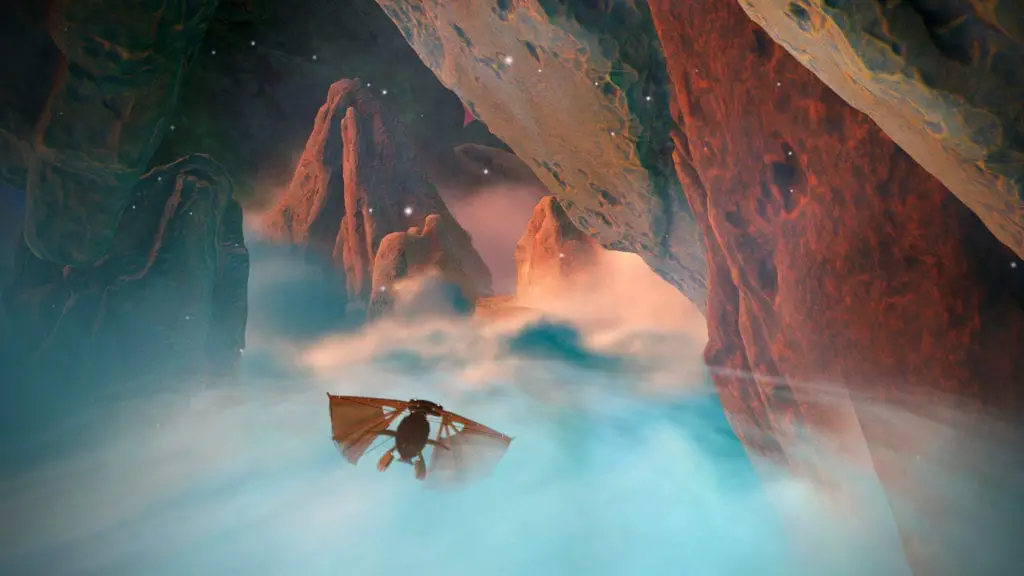
Traversing the rivers on the ship is a mini-game of sorts on its own. The ship floats with the current and we can simply direct it and raise or fold the sails. It can be monotonous on its own, but thankfully the game allows us to instantly travel to key locations – Iox being the first one.
It’s a different story while we’re looking for a new site, however. During the course of our journey, we will discover new places we have to go to. Or rather, we will get an idea for where to look. Then we need to sail our ship in that general area until we find it. The more information and items we find, the smaller that area gets.
Now, when I say we “have” to go to those places… that is not strictly true. Heaven’s Vault is a non-linear game. That means there are different paths we can follow. We may well not visit all the places, meet all the people and see all the dialogue. In fact, we’re not likely to experience much of it in one playthrough. Some choices are mutually exclusive. This is to encourage playing the game again.
I know there are things I’ve missed and people I haven’t met, though I do believe I’ve seen all the locations. Some things that I really wouldn’t think would be possible are indeed such. The game auto-saves itself frequently, so there’s no real way to back out of anything we said or did without restarting.
I’m being intentionally oblique about the game’s setting and its history, as discovering it is part of the fun. Some readers might have noticed a discrepancy between Aliya’s ship being wooden while also travelling with a robot. It’s a key part of the setting. Robots are just one of many technologies the people of the Nebula use without understanding them.
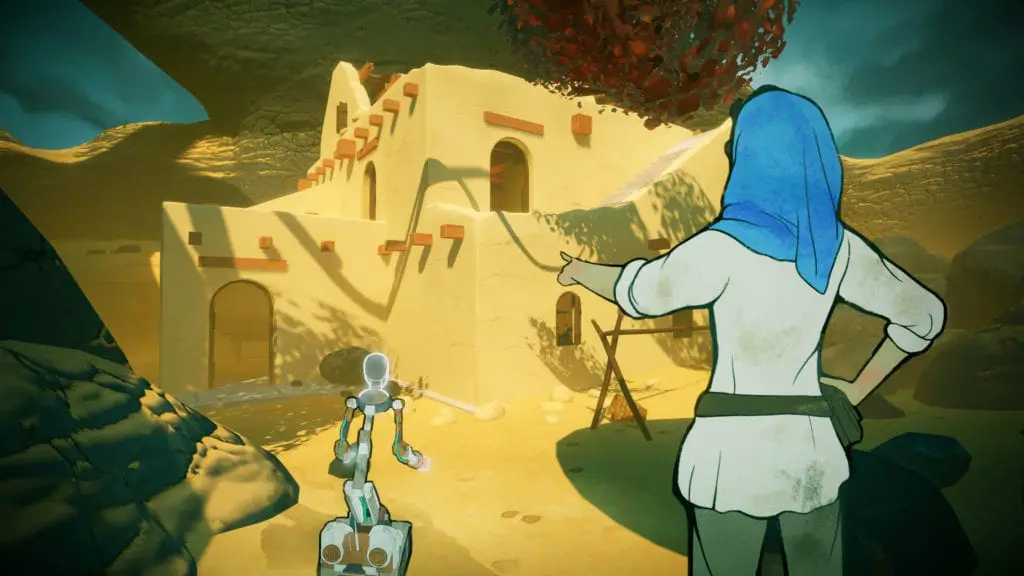
How does the game actually play, though? Whether we’re investigating an ancient site or one of the inhabited locations, the game controls much like any adventure game. There’s very little of the traditional “use this on that to get something” dynamic, however. Our main activities will be exploration, dialogue and translation.
The core of the game’s experience is discovery, in whatever form it takes. We unearth bits and pieces of the plot itself and the setting’s history. There’s really not much in terms of puzzles, as such. The game certainly does reward being observant, though. We’ll never be unable to progress if we miss something — or at least it never happened to me. But noticing things will lead us to more information and more translation, which is where the fun is.
Heaven’s Vault won’t test our reflexes, either. Aliya is neither Lara Croft nor Indiana Jones, so feats of athleticism are rather beyond her. As for Six… he travels on treads, so simple stairs are an impassable obstacle for them. This often leads to humour, but Aliya having to go off on her own (frequently despite Six’s protests) can also have more dramatic consequences. Some sites also have a time limit of sorts, if the air supply on the moon is limited.
From a technical standpoint, Heaven’s Vault is simple but solid. It’s not exactly high-budget, and sometimes it shows. While the NPCs we speak to have varied appearance, those in the background share just a few models. The animation is fairly simple as well. Where the game’s graphics do excel are the backgrounds and scenery of all the locations we visit.
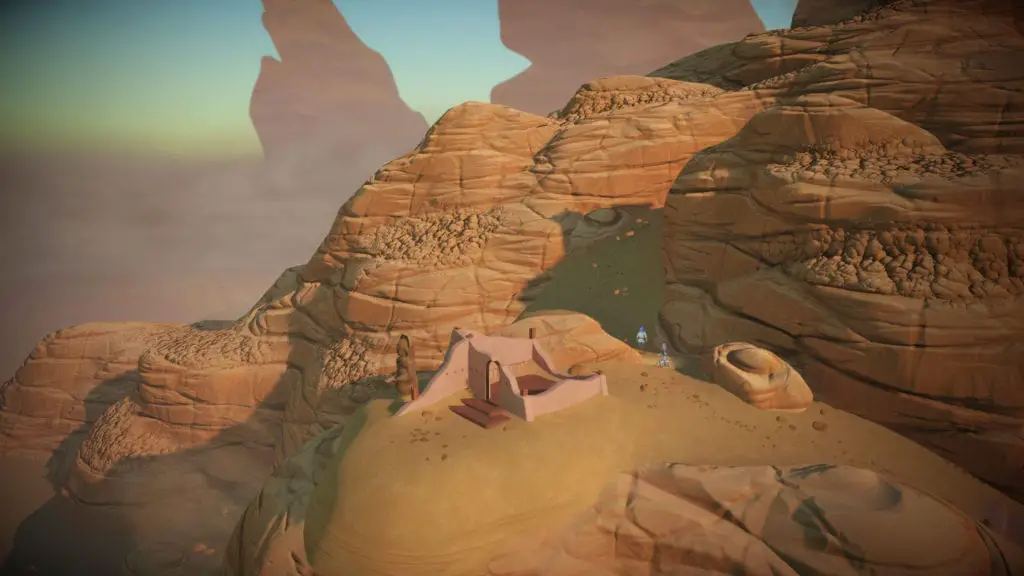
Heaven’s Vault is an atypical game in many ways. It’s not a puzzle game or an action one. It’s a storytelling game that has us explore, translate, think and guess. When we begin playing it, we know very little about the world, the history and the people. As we play on, we’ll learn and feel tempted to learn even more. That, I think, is a feeling few other games evoke.
Heaven’s Vault is available on Steam and the PSN Store
Images courtesy of Inkle Studios

